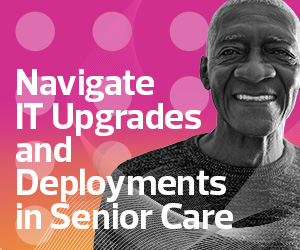The Rise of Generative AI and LLMs
Generative AI and LLMs have captured the public’s interest and imagination for good reason. These technologies have the power to create content, from text to images and beyond, based on the data they have been trained on. LLMs, such as OpenAI’s ChatGPT, demonstrate an ability to understand and generate humanlike text, engaging in conversations, answering questions, and even writing coherent and contextually relevant content. The implications for nonprofit aging-services providers are vast, offering new ways to engage with their stakeholders, automate tasks and even personalize services.
Reducing Administrative Tasks
One of the most immediate benefits of adopting generative AI and LLM technologies is the significant reduction in administrative burdens. Automating routine tasks such as data entry, scheduling and taking team meeting notes frees up valuable time for staffers, allowing them to focus on more strategic initiatives or critically important direct patient care. This has the potential to not only improve operational efficiency but to also enhance job satisfaction among employees, who can engage in more meaningful work.
DISCOVER: Expert guidance can help your senior care organization reach its AI goals.
Enhancing the Resident Experience
The potential of voice assistants based on LLMs to transform care for older adults and residents is immense. Conventional mobile devices such as tablet devices and smartphones often pose challenges for older adults. Advanced voice assistants’ capacity to understand and respond in humanlike conversation offers innovative solutions to users, such as retrieving information or responding to requests.
Ultimately, this technology holds considerable potential to leverage sophisticated AI for care and to significantly enhance residents’ day-to-day experiences and quality of life.
Empowering the Workforce with AI Tools
The emergence of tools such as Microsoft 365 Copilot and ChatGPT marks a significant shift toward workforce empowerment across various departments within an organization.
For instance, marketing teams can use these generative AI tools to quickly draft marketing copy, spark creative ideation and analyze market trends with previously unattainable efficiency. What’s more, the rapid production of high-quality content and data analysis frees up employees, allowing more time for other types of activities, such as refining strategies.
In a best-case scenario, AI tools lead to improved outcomes, foster innovation and allow organizations to operate with greater agility and creativity.











